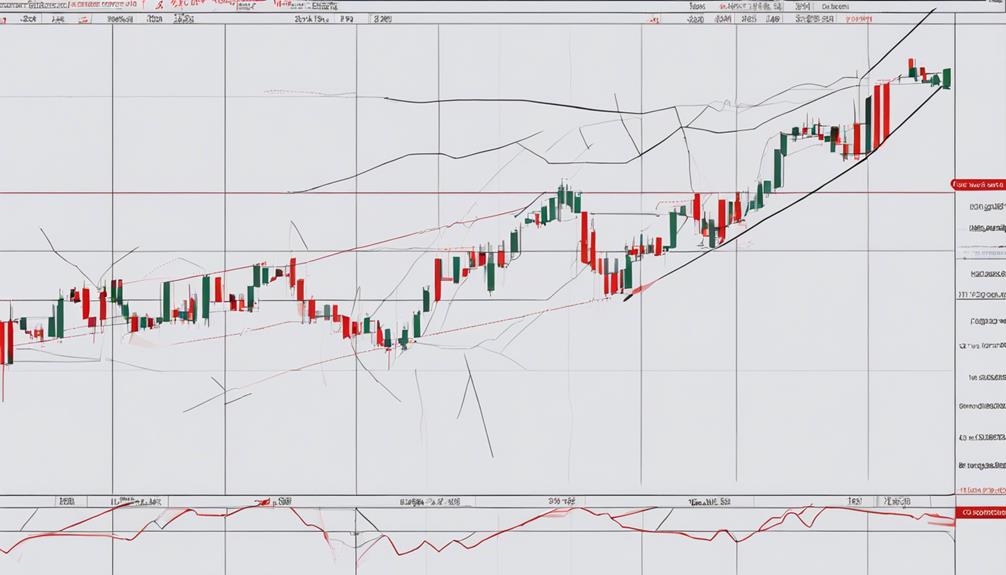Navigating the Hong Kong stock market without effective risk management techniques is like sailing through a storm without a compass. Setting clear risk parameters and diversifying your investments are just the tip of the iceberg.
Imagine having the power to minimize losses and maximize gains by using stop-loss orders strategically. Stay tuned to discover more techniques that can safeguard your investments and potentially steer you towards a more secure financial future in the dynamic world of Hong Kong stocks.
Setting Risk Tolerance Levels
When setting risk tolerance levels for your stock trading activities, consider factors like financial goals, investment timeline, and personal comfort with volatility. Your risk tolerance level is crucial as it determines the maximum amount of risk you're willing to take as an investor.
By understanding your risk tolerance, you can establish boundaries for potential losses and align your investment strategy accordingly. This assessment allows you to make informed decisions about portfolio allocation and asset selection, ensuring that your investments match your risk profile.
Setting clear risk tolerance levels is fundamental for creating a well-defined risk management strategy and maintaining a balanced investment approach. It helps you stay within your comfort zone while also enabling you to capitalize on opportunities within your risk parameters.
Diversification Strategies in Portfolio

To effectively manage risk in your stock portfolio, implementing diversification strategies is essential. Diversification involves spreading your investments across various sectors, geographical regions, and asset classes to reduce risk exposure. By diversifying, you can minimize the impact of market fluctuations on your portfolio and protect against company-specific risks and sector downturns.
Studies have shown that a well-diversified portfolio has the potential to enhance returns while lowering volatility. This strategy can help you navigate market uncertainties and work towards your long-term financial goals effectively. By not being overly concentrated in one area, you can better withstand fluctuations and unexpected events in the market.
Therefore, it's crucial to carefully consider diversification when constructing your stock portfolio to ensure a balanced and resilient investment approach that aligns with your risk tolerance and objectives.
Utilizing Stop-Loss Orders Effectively

Implementing stop-loss orders effectively in your stock trading strategy can significantly enhance your risk management approach on the Hong Kong Stock Exchange. By utilizing stop-loss orders, you can set preset instructions to sell a stock when it reaches a specific price, helping to minimize losses in volatile market conditions.
Here are some key points to consider:
- Preset Instructions: Stop-loss orders act as preset instructions to automatically sell a stock at a predetermined price.
- Minimize Losses: They aid in minimizing losses by executing trades when the market moves against your position.
- Strategic Levels: Setting stop-loss orders at strategic levels can protect your capital and prevent emotional decision-making.
- Protect Capital: By customizing your stop-loss orders based on your risk tolerance and investment goals, you can safeguard your capital effectively.
Incorporating stop-loss orders into your trading strategy can provide a structured approach to risk management, especially in the dynamic environment of the Hong Kong Stock Exchange.
Monitoring Market Volatility Closely

Closely monitoring market volatility is essential for making informed decisions when trading Hong Kong stocks. Utilize tools like the Hang Seng Volatility Index (VHSI) to track market fluctuations and gauge the level of volatility.
Keep a close eye on price movements and trading volumes to assess the market's behavior accurately. Employ technical indicators such as Bollinger Bands or Moving Averages to identify potential trend reversals during volatile periods, helping you adapt your trading strategy accordingly.
Stay informed about news and announcements concerning economic indicators, geopolitical events, and company earnings as these can significantly impact market volatility. Implementing stop-loss orders and setting predefined risk levels based on the observed volatility can assist in managing and mitigating potential losses effectively.
How Can I Implement Effective Risk Management Techniques for Hong Kong Stocks?
When investing in Hong Kong stocks, it is crucial to implement effective risk mitigation strategies. Diversifying your portfolio, setting stop-loss orders, and staying informed about market trends are all effective ways to manage and reduce risks. Additionally, considering options trading and using hedging techniques can further enhance your risk management approach.
Implementing Hedging Techniques

As you navigate the realm of Hong Kong stock trading, incorporating hedging techniques becomes pivotal in safeguarding your investments against potential risks and uncertainties. Utilizing financial instruments such as options and futures contracts can help offset possible losses in your portfolio.
To manage market volatility effectively, consider taking opposite positions in correlated assets to minimize overall risk exposure. Implementing long/short positions, derivatives, and diversification strategies are common methods employed by investors to mitigate potential downsides in the market.
By understanding market conditions, assessing your risk tolerance, and aligning strategies with your financial goals, you can successfully implement hedging techniques to protect your investments from adverse price movements and uncertainties.
Frequently Asked Questions
How Do You Manage Risk in the Stock Market?
When managing risk in the stock market, assess risk, diversify your portfolio, use stop-loss orders, employ hedging strategies, analyze volatility, size positions appropriately, monitor markets, analyze trends, consider economic indicators, and align with your risk tolerance to protect investments.
Which Broker Is Best for Hong Kong Stocks?
When choosing the best broker for Hong Kong stocks, compare features like trading platforms, account requirements, fees, customer service, research tools, order execution, margin trading, mobile app, and education resources. Prioritize reputation and user-friendly interfaces.
Can a US Citizen Invest in Hong Kong Stock Market?
Yes, as a US citizen, you can invest in the Hong Kong stock market. Consider foreign investment, regulatory requirements, currency exchange, investment restrictions, tax implications, market volatility, trading platforms, investment opportunities, economic factors, and risk assessment for a successful venture.
What Is Capital Based Position Limit Hkex?
When trading on HKEX, be aware of capital-based position limits. These limits safeguard against overexposure to a single stock. Adherence to these limits is crucial for balanced portfolios and shielding against adverse price swings.
Conclusion
Now that you've learned the top techniques for managing risk in the Hong Kong stock market, remember to tread carefully like a skilled tightrope walker, balancing your investments with precision.
By setting clear risk parameters, diversifying your portfolio, utilizing stop-loss orders, monitoring market volatility, and implementing hedging techniques, you can navigate the market's twists and turns with confidence.
Stay informed, stay vigilant, and watch your investments soar to new heights.


